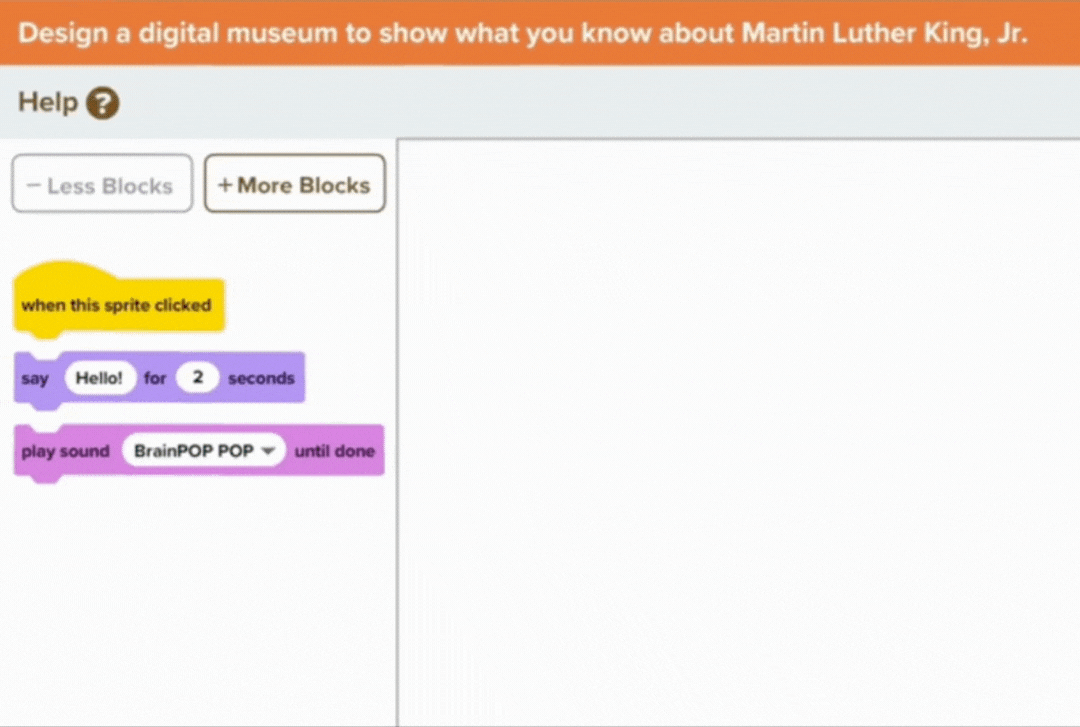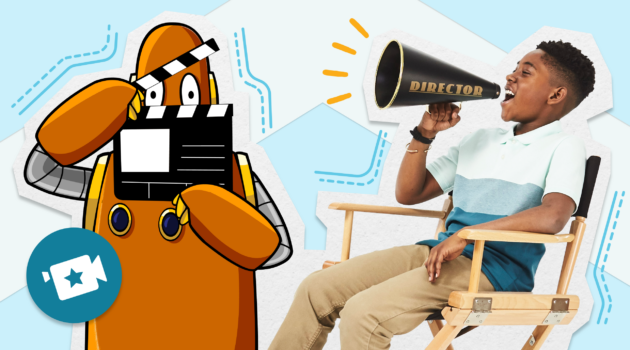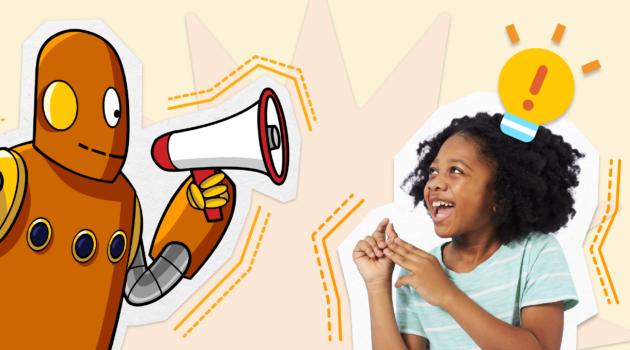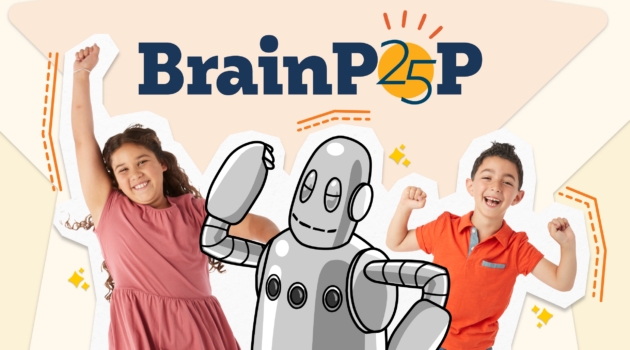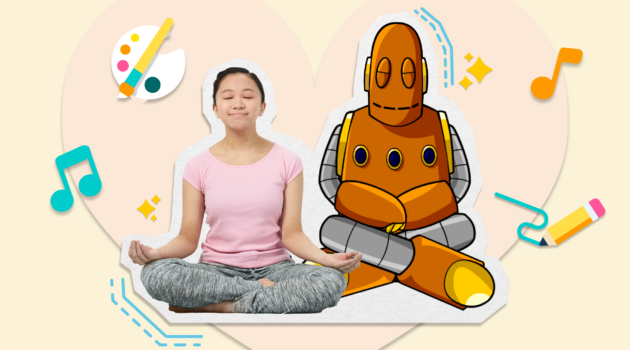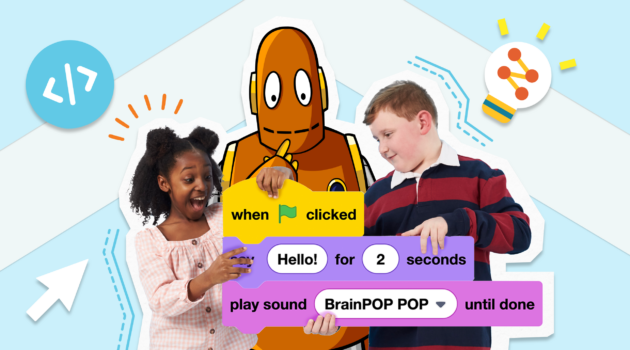Teacher Stories
Cracking the Code on Student Engagement
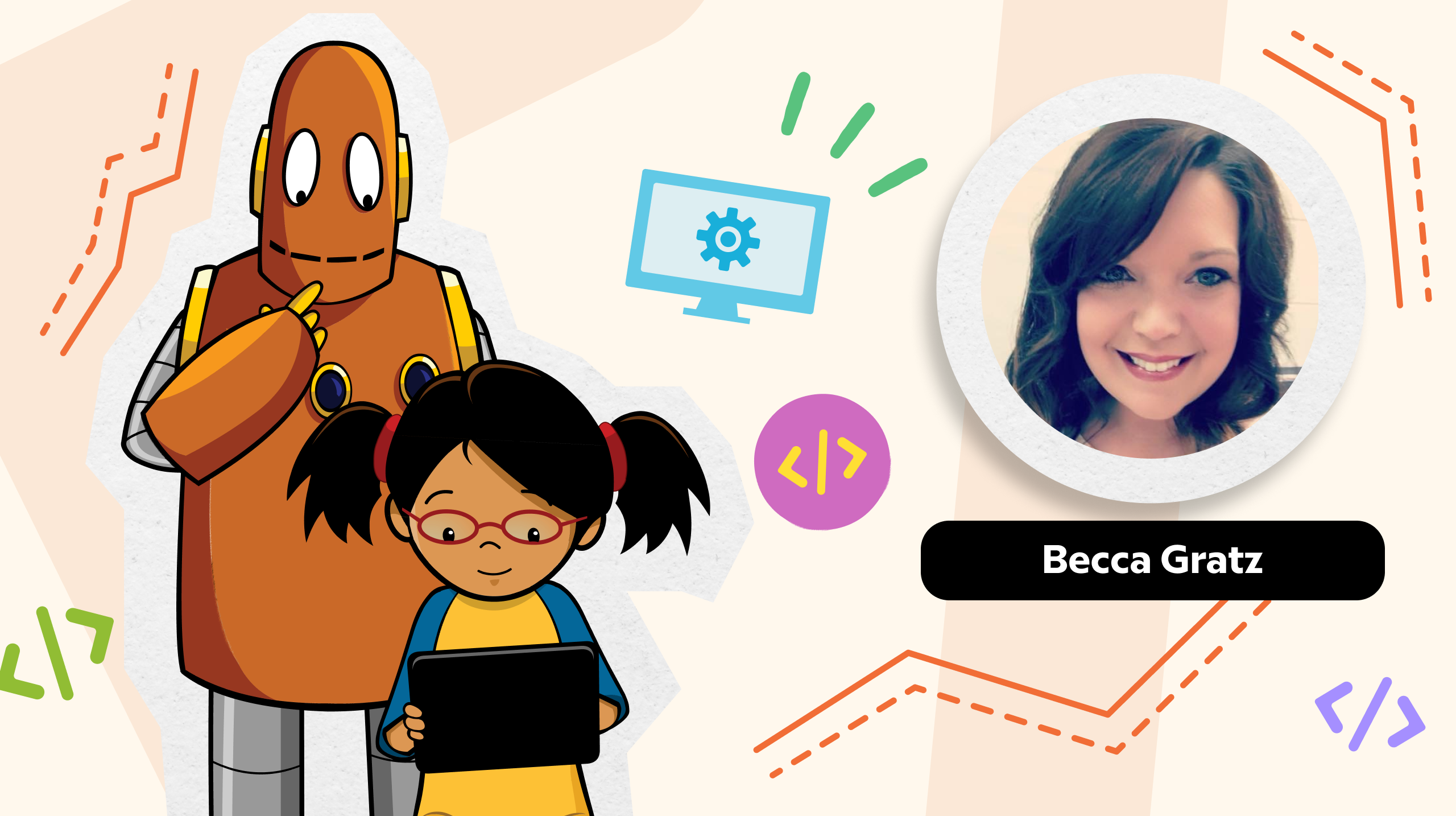
The popular adage that “the jobs of tomorrow don’t exist yet” can feel intimidating to anyone working in education. At the same time, it’s a compelling motivator. Though none of us can predict the future, we know that empowering students with certain skills and competencies can lay the groundwork for success in school and hold value for their professional pursuits.
Computational thinking—which involves breaking down complex problems into smaller, manageable steps and representing them algorithmically—is one such skill. Though the concept may sound complex at first, coding projects are a great entry point for students to build their computational thinking muscles. There are easy, accessible, and impactful ways to engage students while you learn alongside them. Follow along as we help you introduce computational thinking into your classroom.
Fall in Love With Computer Science
According to Becca Gratz, “Anyone can expand their students’ skills in coding and computational thinking.” As a Certified BrainPOP Educator and elementary instructional facilitator of computer science, she also knows firsthand that anyone can fall in love with computer science. Gratz points out that teachers do not need to know how to code to introduce the basics. “The number one reason teachers resist computer science and coding is because they don’t know how to do it,” says Gratz. “The number two reason is time constraints. And a third reason is they think they need expensive equipment or software.” Gratz insists that teachers can begin with students as early as kindergarten using simple strategies that are free and don’t require a significant time commitment or any coding experience.
Take It Step by Step
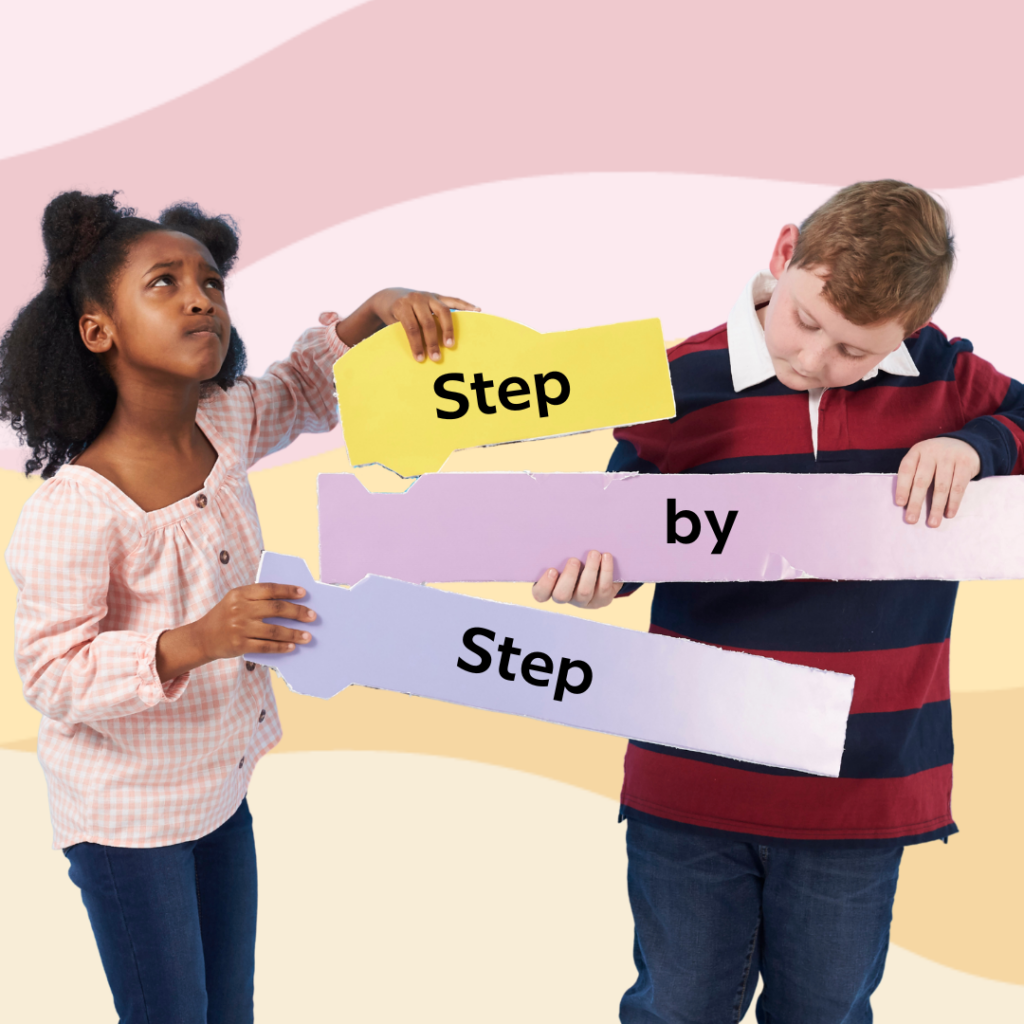
Imagine asking your students to describe the steps to make a peanut butter and jelly sandwich. They might begin by putting peanut butter on a slice of bread, but they’d soon realize that this process involves multiple sequential actions, such as opening a drawer, picking up a knife, locating the peanut butter jar, opening the lid, and more.
Gratz elaborates on the significance of breaking down large problems into smaller chunks. “This skill not only forms the basis of computational thinking but also equips students with 21st-century problem-solving skills,” she says. By applying these strategies, students learn to tackle tasks in a way that makes them less overwhelming. It is a lifelong skill that can support mental well-being and foster resilience.
Be the Robot
Gratz’s approach to integrating coding and computational thinking is hands-on and interactive. She starts with a simple exercise for kindergarten students: asking them to describe the steps to move from the classroom to the library. “I become their robot and ask them to make me move,” she says. “We talk through every step as we walk. Then I let them know we will make the computer do the same thing.” This real-life example helps students understand the concept of sequencing and prepares them for the transition to computational thinking. “The kiddos show so much joy in the process.”
She emphasizes that her goal isn’t to create a classroom of coders but to equip students with skills that extend far beyond coding. The aim is to cultivate a diverse population of students interested in science and technology who see computer science as a viable career path.
Gratz is fortunate that her Loudoun County, Virginia, school district provides ample technology and tools. Still, she is quick to point out that you don’t necessarily need a big tech budget to experiment. You can look into borrowing from the library or writing grant proposals to get robots. Or be the robot yourself, as Gratz does with her youngest learners.
Enter BrainPOP Creative Coding
Adding in Creative Coding is a logical progression in the learning process. “What I love about BrainPOP is that students are comfortable with Moby—and so are teachers,” says Gratz. “When kids use BrainPOP, they are safe, constantly involved, and the content is so relevant that all of my kiddos see themselves in the material.” Gratz says, “My BrainPOP classroom is a safe, engaging, and inclusive learning environment. Moby doesn’t talk, so there is no language barrier. And Annie speaks in such a clear, concise way, delivering a large amount of content in a small number of words.” Gratz adds, “With Creative Coding, students and teachers can learn the tool together and fail forward. The results won’t be perfect at first, which is okay!”
Prompts guide students along the way, so no technical background is needed. They learn block-based coding using the Scratch visual programming language and text-based coding with Vidcode, which invites them to apply JavaScript programming fundamentals. With Creative Coding, students create personally meaningful projects that deepen knowledge, foster creative expression and experimentation, and empower them to show what they know.
Lead (and Play) with the Content
The best approach, according to Gratz, is to dedicate time to explore and begin to understand the components of each new learning resource. Resist the urge to use those early exploratory projects as an assessment tool. Emphasize content, not coding skills.
“When looking to integrate computer science into lessons, think about where it organically fits,” says Gratz. She notes that computer science and coding instruction should be relevant to what students are learning. With BrainPOP, you can seamlessly introduce coding concepts, regardless of the standards-aligned topic you are covering. This content-first approach helps to make coding an intrinsic part of the learning experience rather than a separate lesson.
To bring the concept to life, Gratz describes a project on hurricanes she does with her second graders using the familiar KWL (What I Know, What I Want to Know, What I Learned) framework. “As teachers, we need to collect data to determine what prior knowledge our students might have and consider what misconceptions we may need to address before or during instruction. KWL charts are a common way for teachers to do this.”
The only direction Gratz gives students is to include three facts they learn about a natural disaster. The expectation is clear, but the open-ended nature of the activity allows students to creatively drive how they present their learning. They start by outlining statements they think are true: “Hurricanes make it rain.” They choose three sprites in BrainPOP Creative Coding connected to the lesson (e.g., a hurricane swirl icon, an image of a rain shower, and Moby sitting near the shore). Then they watch the BrainPOP movie about hurricanes, research a secondary source, and change their assumptions based on what they learn: “I used to think hurricanes make it rain. Now I know they have really strong winds and make it rain so much that some places flood.” This exercise encourages critical thinking and active engagement as students develop a deeper understanding of the topic.
Three steps to set your students up for success:
- Set expectations for students’ end project through a rubric or checklist.
- Have students create a plan.
- Determine a timeline, and stick to it.
“Some students will go beyond your expectations. Some students won’t finish. That is okay!” says Gratz. Once students have mastered the basics, they can begin to try making simple games, telling stories with dialogue, or explaining basic math problems–all with coding projects.
Look for the Helpers
For educators who feel overwhelmed by the prospect of teaching coding, Gratz emphasizes that it’s okay to not have all the answers. She encourages teachers to trust their students’ capabilities. “Students know so much!” says Gratz. They often have a wealth of knowledge beyond what’s outlined in the curriculum. “Sometimes teachers limit their impressions of kids’ knowledge because they are just looking at the standards. Let kids show you what they know. And admit to them that you don’t always have the answers.”
Gratz suggests looking for students with some coding experience and allowing them to be your helpers. When you can admit that you don’t have all the answers, it fosters a culture of community and continuous learning. “Remember,” says Gratz, “you don’t need to know HOW to code… you just need to know what the program is capable of so you can set reasonable expectations for your students. You need to be a guide, encouraging your students to explore and create.”
BrainPOP also offers built-in tutorials to help teachers and students get started. Teachers looking for a foundation to support students as they learn the vital skills associated with computer science—coding, collaboration, problem-solving, and more—will find professional resources at their fingertips. Creative Coding includes a live professional development webinar to help you get started. An in-person coding workshop illustrates best practices for integrating coding into an existing curriculum. Plus, a robust library of lesson plans, videos, and teaching and assessment tips is available on demand.
Open Up Endless Opportunities
Every day in the classroom helps to shape the minds of future innovators, problem solvers, and leaders. By embracing coding and computational thinking, you’re opening students’ eyes to new possibilities and preparing them to meet challenges in an ever-evolving world. Be prepared for a smile or two as they surprise themselves with those “aha!” moments and feel their confidence soar.
Karen Kane is an editorial, marketing, and communications professional celebrating meaningful print, digital, and real-world experiences for kids, parents, caregivers, and educators.


